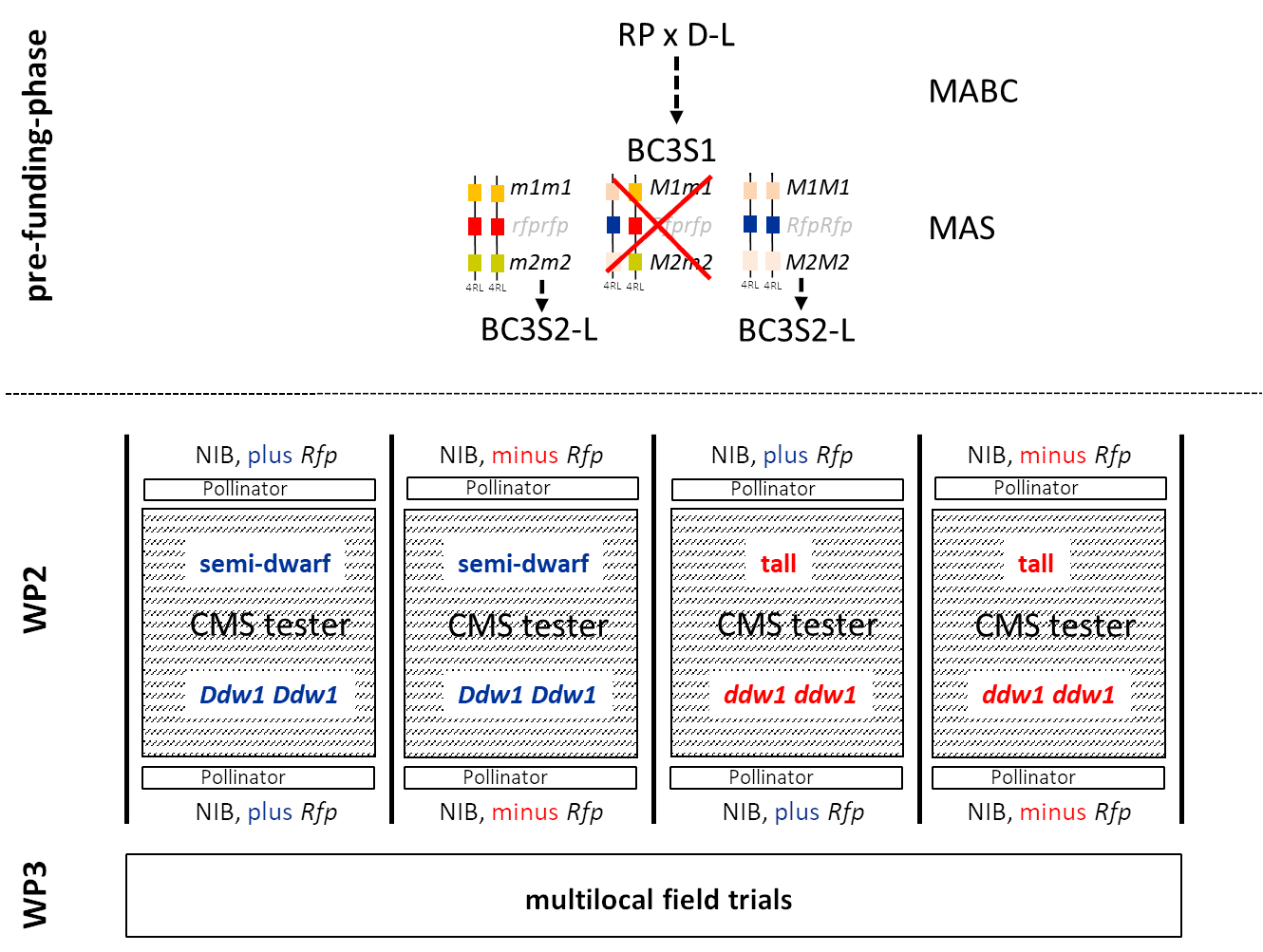
BC3S1 single plants carrying either the elite (E) non-restorer allele or the donor (D) restorer allele from weedy (Rfp1) and forage rye (Rfp2 and Rfp4) have been marker-assisted selected in a pre-funding-phase to establish near isogenic homozygous BC3S2 bulks (NIB) in two elite inbred lines. These pollinators will be crossed in RYE-SUS with three male sterile semi-dwarf as well as their near isogenic tall single-cross non-restorer genotypes between isolation walls. The genetic makeup of the hybrids enables to calculate linkage drag effects as the difference (ΔE-D) between the means of individual NIB partners, which either carry the E or the D allele at the 4RL DCS. Similarly, the effect of Ddw1 will be determined by pairwise comparisons between semi-dwarf and near isogenic tall genotypes. As a consequence, our research conducted in RYE-SUS will clarify, if the fitness costs of Rfp genes can be counterbalanced by using beneficial effects of Ddw1 on grain yield.
This proof of concept will open a new era in breeding cereal hybrid varieties with high yield potential and minimized risk of ergot infestation.

The set up to establish experimental hybrids in 10/2029. Pollen parents are flanking two genetically divergent single coross CMS testers.
